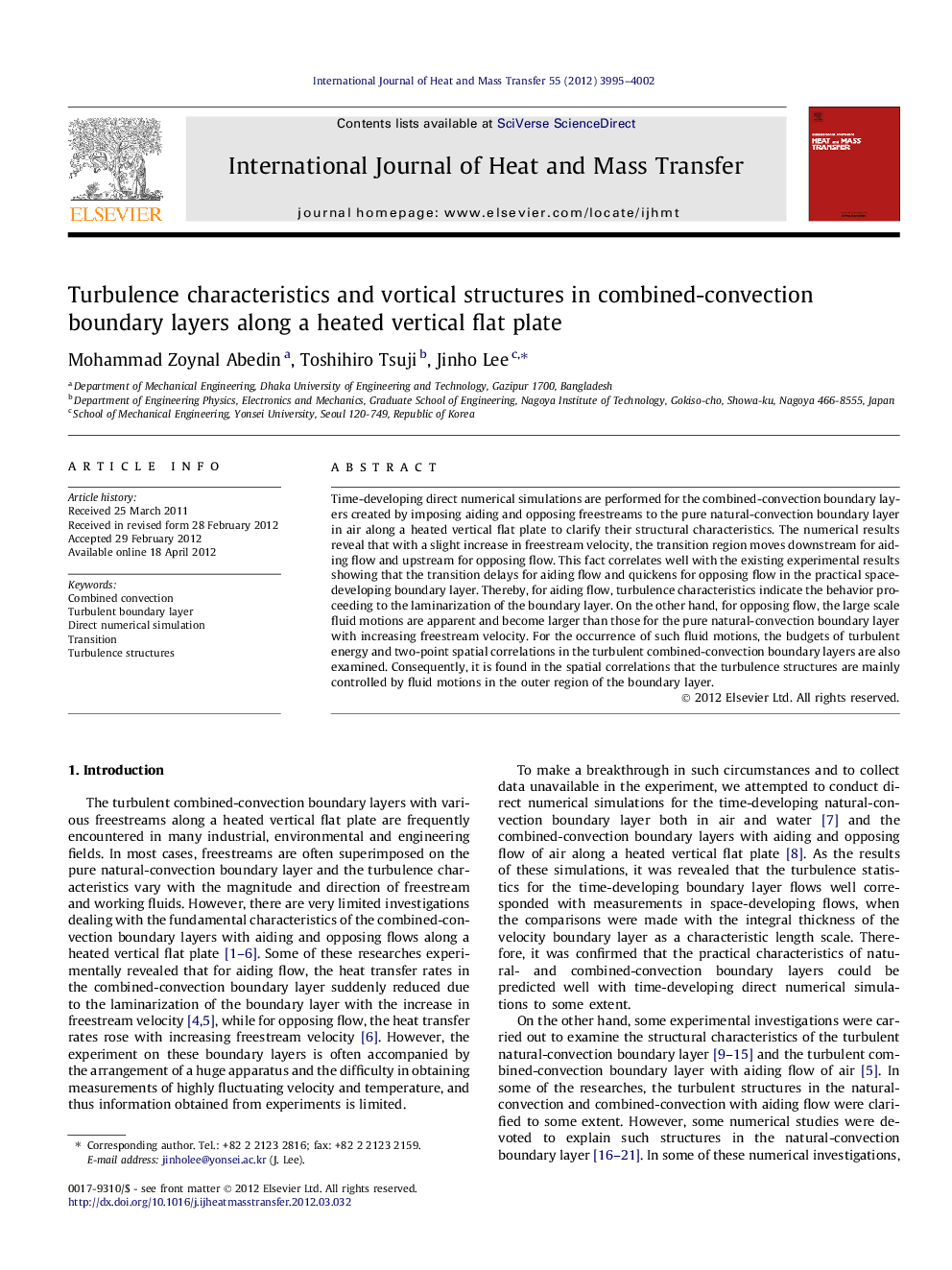| Article ID | Journal | Published Year | Pages | File Type |
|---|---|---|---|---|
| 659046 | International Journal of Heat and Mass Transfer | 2012 | 8 Pages |
Time-developing direct numerical simulations are performed for the combined-convection boundary layers created by imposing aiding and opposing freestreams to the pure natural-convection boundary layer in air along a heated vertical flat plate to clarify their structural characteristics. The numerical results reveal that with a slight increase in freestream velocity, the transition region moves downstream for aiding flow and upstream for opposing flow. This fact correlates well with the existing experimental results showing that the transition delays for aiding flow and quickens for opposing flow in the practical space-developing boundary layer. Thereby, for aiding flow, turbulence characteristics indicate the behavior proceeding to the laminarization of the boundary layer. On the other hand, for opposing flow, the large scale fluid motions are apparent and become larger than those for the pure natural-convection boundary layer with increasing freestream velocity. For the occurrence of such fluid motions, the budgets of turbulent energy and two-point spatial correlations in the turbulent combined-convection boundary layers are also examined. Consequently, it is found in the spatial correlations that the turbulence structures are mainly controlled by fluid motions in the outer region of the boundary layer.
